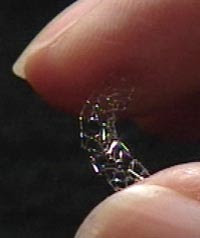Stone, Gregg W et al. The New England Journal of Medicine “Safety and Efficacy of Sirolimus- and Paclitaxel-Eluting Coronary Stents” March 8, 2007
http://content.nejm.org/cgi/content/full/356/10/998
This clinical study was published in the New England Journal of Medicine in 2007. At this time, it was evident that while drug-eluting stents could effectively prevent restenosis, but their implantation might present a new more serious health risk—stent thrombosis. Previous studies, such as the trial discussed in the previous blog, suggested that a previously unrecognized deleterious side effects from implantation of drug-eluting stents might be stent thrombosis resulting in heart attacks, and even death.
This study compares not only the safety and efficacy of drug-eluting stents to bare-metal stents, but also compares two different drugs, Sirolimus- and Paclitaxel. The study traces rates of stent thrombosis and target-lesion revascularization, defined as the need to perform multiple percutaneous interventions, or bypass, at the target site. This article suggests that both sirolimus and paclitaxel-eluting stents are more likely to induce stent thrombosis than bare-metal stents. But, it also shows that the drug-eluting stents greatly reduce the need for more surgeries to combat restenosis. No marked difference was observed between the two different drug-eluting stents. Similarly, there was no difference in heart attack or death rates between the bare-metal and drug-eluting stents.


No comments:
Post a Comment